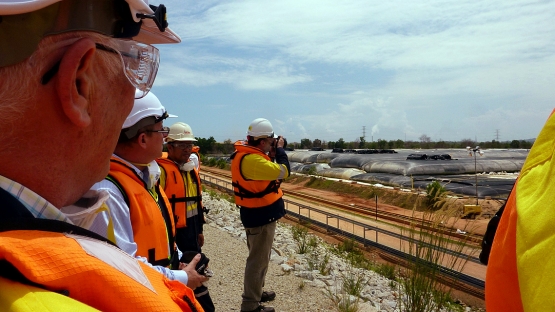The Malaysian government has implemented all recommendations put forward by an IAEA-led review mission in 2011 on radiation safety at the Lynas Advanced Materials Plant (LAMP), a rare earths processing facility completed in 2012 near Kuantan, Malaysia. This is one of the main conclusions of a report recently made public by the IAEA on the request of the Malaysian government. The release of the report in itself complies with recommendations to ensure maximum transparency over the project.
“After the analysis of all documentation provided by the relevant counterpart and examined by the review team and in addition to the observations collected during the site visit and the dialogue sustained with different stakeholders, it became evident that the radiological risks to members of the public and to the environment associated with the operation of [the] Lynas Advanced Material Plant are intrinsically low,” the report further concludes.
The Malaysian Government originally approached the IAEA with a request to organize an independent expert review of the radiation and health aspects of the facility in May 2011. The facility, part of the Advanced Materials Project being developed by the Lynas Corporation Ltd., is where concentrate of rare earth ore will be further processed to produce high purity rare earth compounds.
The review mission took place from 29 May to 3 June 2011. Upon its conclusion, the review team provided a Mission Report that contained a total of eleven recommendations addressing technical, public communication and follow-up areas. The 2011 report had since then been made publicly available.
One recommendation from the 2011 report called for organizing a follow-up mission that would review the fulfilment of the original recommendations. This follow-up mission took place in October 2014, following a request from Malaysia. The second review mission also focused on the safety and operational aspects that were addressed in the 2011 Mission.
This report summarizes the finding of that mission, presents each one of the formulated recommendations, and provides the findings related to each one of them, as well as the overall assessment. It also presents additional follow-up recommendations in the appropriate areas.
Rare earth compounds are a group of chemically-similar elements that are crucial in the manufacture of many hi-tech products. Their unique magnetic, luminescent and electrochemical properties make them ideal components in consumer electronics, camera and telescope lenses, aircraft engines, television and computer screens, health products and many others. Despite their name, most of these elements are abundant in nature.
The full report – including information on the mission results, technical background, and detailed recommendations – is available for download on the IAEA’s web site.


